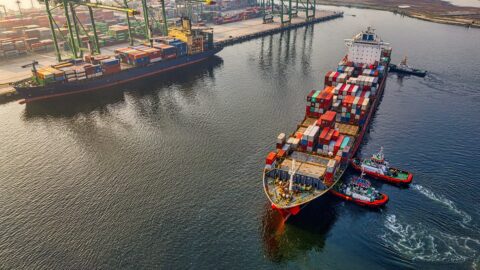Uncertainty is high, while volatility is low. How to resolve the contradiction?
Uncertainties
The uncertainties are related to the high level of global debt, low productivity growth, extremely expansive central bank policies, the divisive forces in the EU, the surge in political populism and the uncertain answer to the question of which macro-economic state the global economy is currently in or will be in in the future (lowflation, deflation or inflation).
The future is uncertain, that’s for sure. Particularly in times when many developments are new compared to the recent past: the Great Recession has been a turning point. But when we look at more recent trends, the picture we get is a bit more optimistic.
Global growth favourable
In its new World Economic Outlook, the International Monetary Fund projects the global economy to grow by 3.1% in 2016, following 3.2% growth in 2015. The forecast was not revised down compared with the July estimate, which is a fact that can be considered positive in itself.
Industrialised nations disappoint
Admittedly, the 2016 growth forecast for advanced economies has been marked down compared with the July estimate (by 0.2 percentage points to 1.6%); last year’s growth was still 2.1%. However, highly significant indicators such as industrial production and survey indicators are at least pointing to growth stabilising at this level, which corresponds to the reduced potential growth.
Emerging markets doing surprisingly well
In contrast to the industrialised nations, growth in emerging markets and developing economies is expected to pick up in 2016 (by one tenth of a percentage point to 4.2%), which marks an increase of 0.2% compared with 2015.
The difference in growth between the industrialised nations and the emerging markets is therefore expanding, with the dynamics taking place in the emerging markets. Russia and Brazil are recovering from recession, and commodity prices and currencies have stabilised. Economic policy in China is enabling the gradual slowdown of its growth rates and a rebalancing of its economy as a whole, while admirable structural reforms are being implemented in India, with the economy showing robust growth.
Favouring emerging markets
This development is reflected in Asset Allocation. Firstly, we favour government bonds in emerging markets both in local and hard currencies. Secondly, we overweigh emerging markets in country equity allocation.
To summarise, three risks can be deduced from the dichotomy between high uncertainty and low volatility.
TINA
The global economy is growing remarkably evenly, i.e. with low volatility. Relatively small confidence shocks, such as that experienced after the Brexit referendum or that was triggered by the depreciation of the Chinese currency, can be overcome by expansive central bank policies. The related uncertainties have relatively little impact on direct growth. However, market prices do not reflect these uncertainties. The TINA (There Is No Alternative) approach is dominating. As long as the risks do not turn into realities, risky securities classes continue to be purchased since secure government bonds only promise very low yields.
The liquidity trap
The cycle of crisis – central bank intervention – stabilisation and/or improvement – disregarding of risks – new crisis could be broken since central bank policies are becoming ineffective or even counterproductive. The Bank of Japan is one example. It is highly committed to overcoming the deflationary trend, but its measures taken last September (implicit promise to continue to lower real yields into negative territory) seem somewhat desperate.
Policy mistakes
Monetary and economic policy might be based on false macro-economic assumptions. When important global markets are in secular stagnation, it means that prolonged negative real yields are required to ensure growth. (More substantial) interest rate hikes in the USA or a reduction in the bond purchase programmes in the Eurozone could trigger a recession or lead to market turbulence. Furthermore, government aid for systemically important, failing banks could be granted too late. Additionally, protectionist action taken by a President Donald Trump might result in a trade war.
Legal disclaimer
This document is an advertisement. Unless indicated otherwise, source: Erste Asset Management GmbH. The language of communication of the sales offices is German and the languages of communication of the Management Company also include English.
The prospectus for UCITS funds (including any amendments) is prepared and published in accordance with the provisions of the InvFG 2011 as amended. Information for Investors pursuant to § 21 AIFMG is prepared for the alternative investment funds (AIF) administered by Erste Asset Management GmbH pursuant to the provisions of the AIFMG in conjunction with the InvFG 2011.
The currently valid versions of the prospectus, the Information for Investors pursuant to § 21 AIFMG, and the key information document can be found on the website www.erste-am.com under “Mandatory publications” and can be obtained free of charge by interested investors at the offices of the Management Company and at the offices of the depositary bank. The exact date of the most recent publication of the prospectus, the languages in which the fund prospectus or the Information for Investors pursuant to Art 21 AIFMG and the key information document are available, and any other locations where the documents can be obtained are indicated on the website www.erste-am.com. A summary of the investor rights is available in German and English on the website www.erste-am.com/investor-rights and can also be obtained from the Management Company.
The Management Company can decide to suspend the provisions it has taken for the sale of unit certificates in other countries in accordance with the regulatory requirements.
Note: You are about to purchase a product that may be difficult to understand. We recommend that you read the indicated fund documents before making an investment decision. In addition to the locations listed above, you can obtain these documents free of charge at the offices of the referring Sparkassen bank and the offices of Erste Bank der oesterreichischen Sparkassen AG. You can also access these documents electronically at www.erste-am.com.
Our analyses and conclusions are general in nature and do not take into account the individual characteristics of our investors in terms of earnings, taxation, experience and knowledge, investment objective, financial position, capacity for loss, and risk tolerance. Past performance is not a reliable indicator of the future performance of a fund.
Please note: Investments in securities entail risks in addition to the opportunities presented here. The value of units and their earnings can rise and fall. Changes in exchange rates can also have a positive or negative effect on the value of an investment. For this reason, you may receive less than your originally invested amount when you redeem your units. Persons who are interested in purchasing units in investment funds are advised to read the current fund prospectus(es) and the Information for Investors pursuant to § 21 AIFMG, especially the risk notices they contain, before making an investment decision. If the fund currency is different than the investor’s home currency, changes in the relevant exchange rate can positively or negatively influence the value of the investment and the amount of the costs associated with the fund in the home currency.
We are not permitted to directly or indirectly offer, sell, transfer, or deliver this financial product to natural or legal persons whose place of residence or domicile is located in a country where this is legally prohibited. In this case, we may not provide any product information, either.
Please consult the corresponding information in the fund prospectus and the Information for Investors pursuant to § 21 AIFMG for restrictions on the sale of the fund to American or Russian citizens.
It is expressly noted that this communication does not provide any investment recommendations, but only expresses our current market assessment. Thus, this communication is not a substitute for investment advice.
This document does not represent a sales activity of the Management Company and therefore may not be construed as an offer for the purchase or sale of financial or investment instruments.
Erste Asset Management GmbH is affiliated with the Erste Bank and austrian Sparkassen banks.
Please also read the “Information about us and our securities services” published by your bank.


